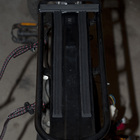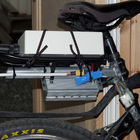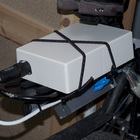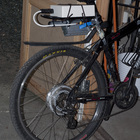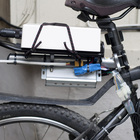
A converted 26-inch MTB e-bike
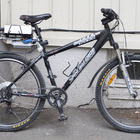
|
SummaryConverting a non-electric bike for electric propulsion can be done easily and cheap with conversion kits. This is an example of a powerful conversion with a total cost of only about 500 USD. |
Introduction
Many people refrain from using their bike to get to school or work, simply because the distance is a bit too far, or because it involves ascending steep hills. With an electric bike, everything suddenly gets more reachable, and you'll find yourself pedaling away where you earlier would drive your car. A new electric bike can be very expensive, but converting your existing bike can be done for a fraction of the cost if you have some basic electromechanical skills and motivation.Some theory
Front-, mid- and rear drive
A front or rear drive e-bike is most commonly seen, and has its motor placed in the wheel hub. This makes installation very easy, and it doesn't take up much space on the bike. A mid drive is a more complex installation where the motor is connected to the bike chain. In other words, you get the benefit of being able to change the gearing of the motor, but with more hassle.Direct drive or geared hub motor
Brushless hub motors (used for front- and rear drive) can typically be categorized into geared- or direct drive motors. The two different kinds have their own pros and cons:Geared motors:
- Peak efficiency at lower and more practical speeds - great for hill climbing
- Smaller size and weight for the same power
- Typically embeds a freewheel, which means you can effortlessly pedal your bike back home with a flat battery
- Practically no wearing / no gears to be replaced at regular intervals
- Very silent operation
- Allows regenerative braking
Parts
For this build, it was chosen to use a geared brushless hub motor for rear drive, and lithium polymer RC battery packs.Main parts:
- greenbikekit.com: Motor kit with regulator, spoked rim with hub motor and accessories
- hobbyking.com: 2 x Turnigy 5000 mAh 6S 20C LiPo battery (44.4 V 5000 mAh)
- farnell.com: Battery box
- farnell.com: Battery box connector (receptacle)
- farnell.com: 2 x Speed controller / charger side connector
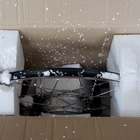
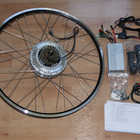
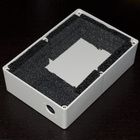
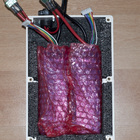
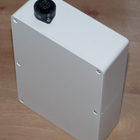
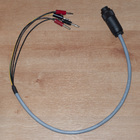
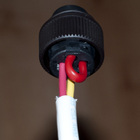
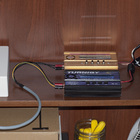
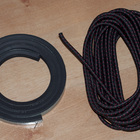
Installation
